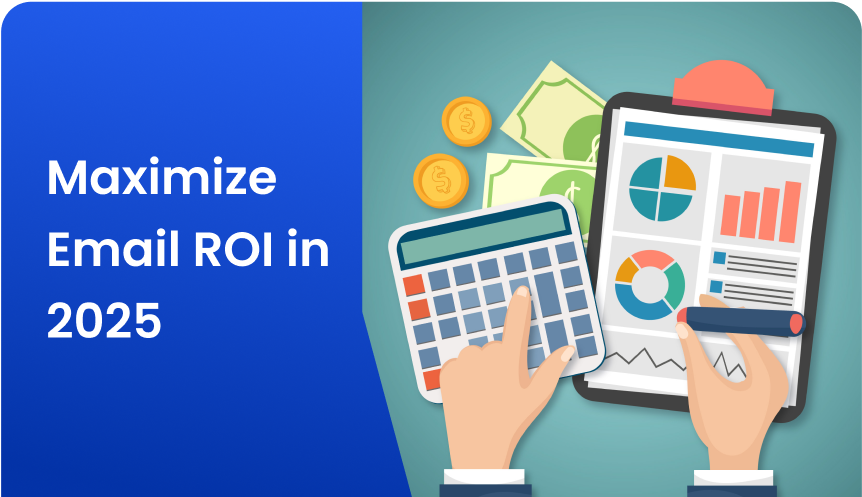Ever sent an email that never arrived? Bounced emails can be frustrating for both you and your subscribers. They miss out on your updates, and it hurts your ability to reach them in the future. A high email bounce rate can be detrimental to your email marketing efforts, affecting your sender reputation and overall deliverability. Bounced emails are emails that fail to reach the intended inbox, creating a lose-lose scenario: subscribers miss out on valuable information, and you lose engagement and credibility. Fortunately, there are several effective strategies to help reduce your email bounce rate and improve your email marketing performance.
This guide explains what email bounce rates are and why they matter. It also provides ten practical tips to lower your bounce rate and get your messages where they need to be: in the Inbox.
What is an email bounce rate?
Your email bounce rate represents the percentage of emails that fail to be delivered to recipients’ inboxes. It’s a crucial metric because it reflects the quality of your email list and your sender reputation. A lower bounce rate indicates that your emails are successfully reaching their intended recipients, while a higher bounce rate suggests issues that need addressing.
To calculate your bounce rate, use this simple formula:

For instance, if you send 2,000 emails and 10 bounce back, your bounce rate is 0.5%. The lower the bounce rate, the better your email deliverability.
Types of email bounces
There are two primary types of email bounces:
Soft bounces: These are temporary delivery issues. Common causes include a full inbox, a temporary server problem, or an email that is too large. Soft bounces are usually resolved over time, and emails may eventually be delivered after the initial bounce.
Hard bounces: These signify permanent delivery failures. Hard bounces occur due to invalid email addresses, non-existent domains, or blocked email addresses. Hard bounces are definitive and require immediate action to avoid future bounces.
Understanding the difference between soft and hard bounces is crucial because it helps in tailoring your approach to managing and reducing them.
Why your email bounce rate matters
Your email bounce rate is a critical metric in email marketing for several reasons:
Impact on deliverability: A high bounce rate can harm your sender reputation with email providers. When your bounce rate is high, email providers might classify your future emails as spam, reducing the likelihood that they will be delivered to your subscribers’ inboxes.
Engagement levels: If your emails are frequently bouncing, you are missing out on opportunities to engage with your audience. A healthy email list ensures that your messages reach active subscribers who are more likely to open, read, and act on your emails.
Sender reputation: Maintaining a low bounce rate is essential for preserving your sender reputation. A poor sender reputation can lead to increased spam complaints, lower open rates, and diminished overall effectiveness of your email marketing campaigns.
10 Effective strategies to reduce your email bounce rate
Use double opt-ins
Implementing a double opt-in process is one of the most effective ways to reduce bounce rates. When a subscriber signs up for your list, send a confirmation email that requires them to click a link to verify their email address. This process ensures that you are only adding valid and active email addresses to your list. Double opt-ins help prevent invalid addresses and improve the quality of your email list.
Additionally, a double opt-in process helps build a more engaged subscriber base. Subscribers who confirm their email addresses are more likely to be interested in your content and engage with your emails, leading to better campaign performance.
Segment your email list
Segmenting your email list allows you to send more relevant content to specific groups of subscribers. By dividing your list based on factors such as demographics, purchase history, or engagement levels, you can tailor your emails to meet the needs and interests of different segments. This approach reduces the likelihood of recipients marking your emails as spam or blocking you, which can lead to bounces.
For example, you might segment your list into categories such as “Active Subscribers,” “Engaged Subscribers,” and “Inactive Subscribers.” Sending targeted content to each segment helps maintain engagement and reduces bounce rates.

Regularly clean your email list
Over time, your email list can become cluttered with inactive or incorrect email addresses. Regularly cleaning your list helps to remove these and maintain a healthy list of engaged subscribers. Use email verification tools to identify and remove invalid addresses. Additionally, consider implementing a re-engagement campaign to reach out to inactive subscribers and encourage them to update their information or confirm their interest in remaining on your list.
Cleaning your list not only helps reduce bounce rates but also improves overall email deliverability and engagement rates.
Email content that triggers spam filters can result in bounces. To avoid this, ensure your emails are well-crafted and avoid using phrases and words commonly associated with spam. Words and phrases such as “Free offer,” “Act now,” “Clearance,” and “Earn money” can flag your emails as spam. Instead, focus on creating valuable content that provides genuine value to your subscribers.
Additionally, ensure that your email formatting is clean and professional. Use a balanced mix of text and images, and avoid using excessively large images or files that could trigger spam filters or cause delivery issues.
A/B test your emails
A/B testing involves sending two variations of an email to different segments of your list to determine which performs better. By testing elements such as subject lines, email content, and calls-to-action (CTAs), you can identify what resonates most with your audience and optimize your emails accordingly.
A/B testing helps you refine your email content and improve engagement rates, which can indirectly reduce bounce rates by ensuring your emails are more relevant and appealing to your subscribers.

Avoid spammy content
Consistency is key in email marketing. Regularly sending emails helps keep your subscribers engaged and reduces the likelihood that they will forget about your brand or become inactive. When subscribers remember your brand and regularly interact with your emails, they are less likely to mark your emails as spam or block you.
Develop a consistent email schedule that aligns with your subscribers’ preferences and interests. This could include regular newsletters, promotional offers, or updates about your products and services.
Use a professional email domain
Sending emails from a professional domain (e.g., hello@ayz.com) rather than a free email service (e.g., @gmail.com) helps establish credibility and trust with your recipients. Emails sent from free domains are often flagged as less trustworthy and can be more likely to end up in spam folders.
Using your own domain not only improves deliverability but also enhances your brand’s professionalism. Ensure that your domain is properly authenticated with SPF, DKIM, and DMARC records to further boost your email deliverability.
Remove hard-bounced addresses
Immediately remove email addresses that hard bounce from your list. These addresses are either invalid or nonexistent, and continuing to send emails to them will only hurt your sender reputation and increase your bounce rate. Most email service providers (ESPs) offer automated tools to manage hard bounces and keep your list clean.
By promptly removing hard-bounced addresses, you can maintain a healthier email list and reduce the risk of future deliverability issues.
Implement a CAPTCHA on signup forms
Adding a CAPTCHA to your email signup forms helps prevent bots and spam accounts from being added to your list. CAPTCHAs require users to complete a challenge to verify that they are human, reducing the likelihood of invalid or fake email addresses entering your list.
Implementing a CAPTCHA is a simple yet effective way to ensure that only genuine subscribers are added to your list, which can help reduce bounce rates and improve overall list quality.

Ask subscribers to update their information
Encourage your subscribers to keep their information up-to-date, including their email addresses. Periodically send emails asking subscribers to update their contact details if they have changed their email addresses or preferences. Providing an easy way for subscribers to update their information helps maintain a clean and active list.
Consider including a link to an updated profile form in your emails or on your website. This proactive approach ensures that you have the most current contact information and reduces the likelihood of bounces due to outdated addresses.
Wrap up
Managing and reducing your email bounce rate is essential for maintaining effective email marketing campaigns. By understanding the causes of bounces and implementing these ten strategies, you can improve your email deliverability, enhance engagement with your audience, and protect your sender reputation. Regular monitoring and proactive list management will ensure that your emails reach their intended recipients and contribute to the success of your marketing efforts.
For more insights and resources on optimizing your email marketing strategies, explore our other guides or reach out to the team at Kasplo. With the right approach, you can achieve better results and drive meaningful engagement with your audience.



